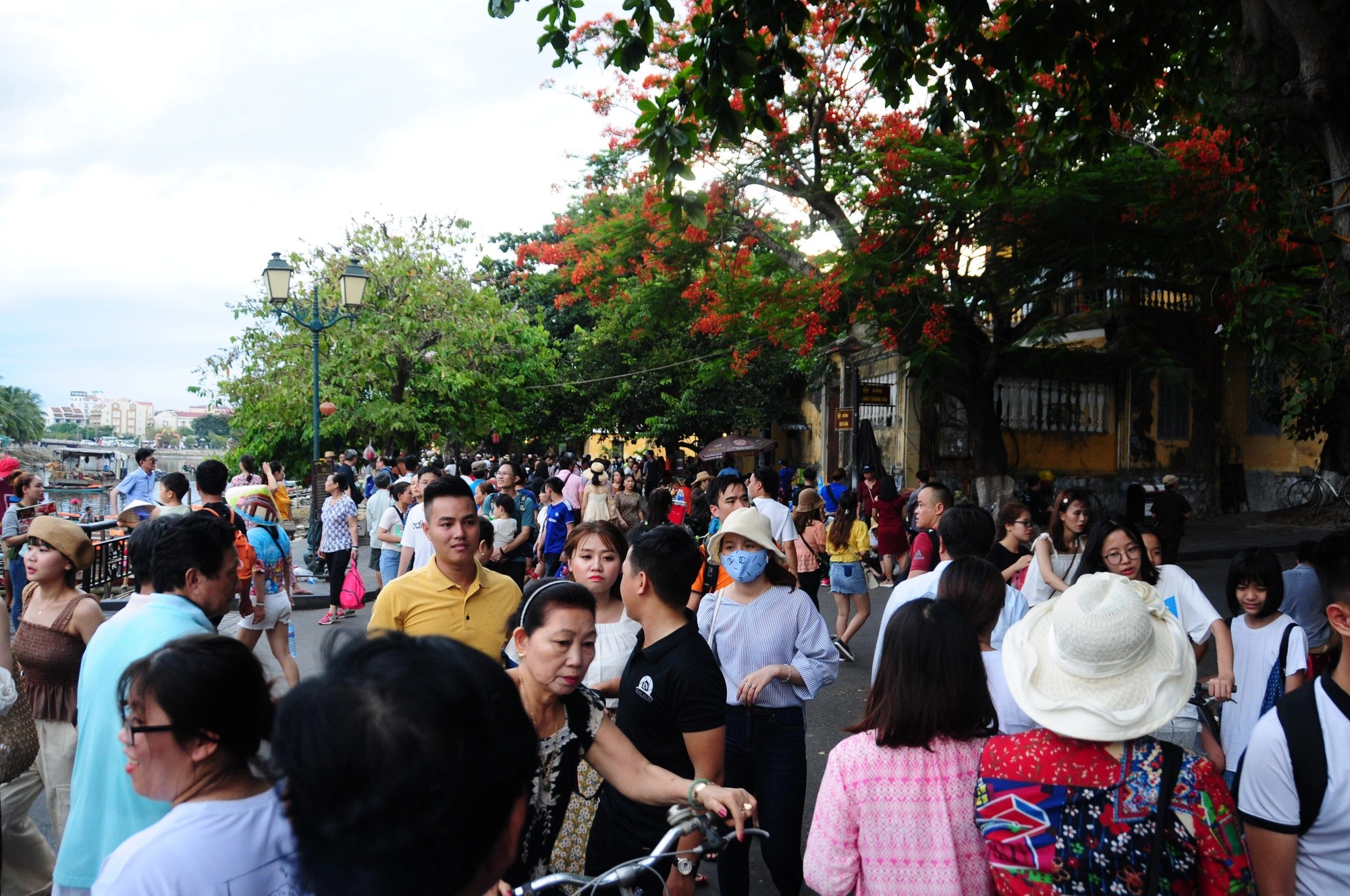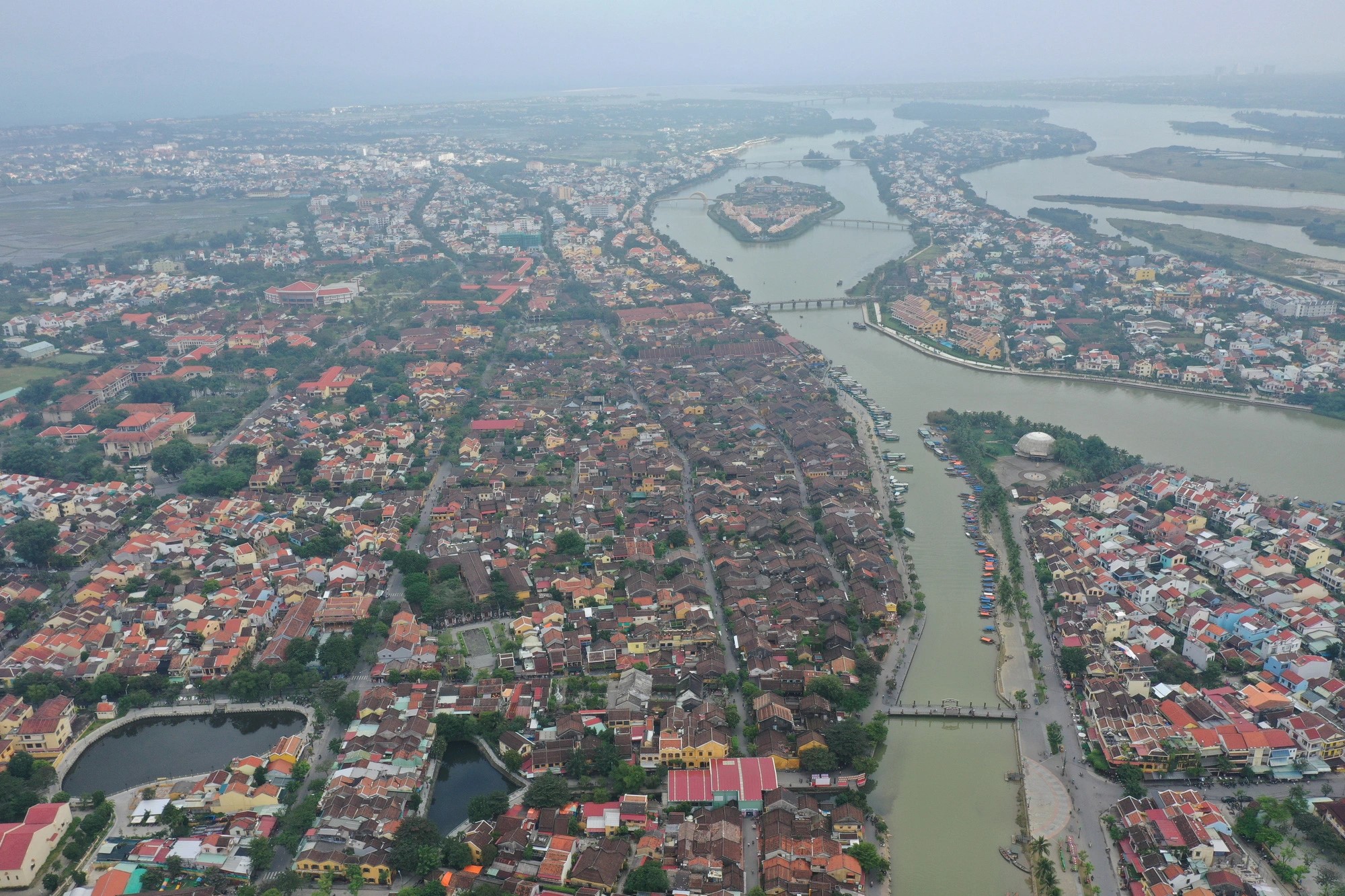Even though Hoi An, a small city in Quang Nam Province, central Vietnam, was crowded with tourists during the last public holiday ending on May 1, the money they spent fell short of expectations.
What can Hoi An do to adjust to the changes in the tourism industry and the preferences of visitors nowadays?
Hefty price
Just back from Hoi An, a Vietnamese visitor commented, "I stayed in Hoi An from April 27 to May 1 and found that there were many problems that needed to be dealt with."
"Among them are baseless high prices of goods and services, the issue of vendors going after visitors, and chaotic transportation," the visitor went on.
Hoi An is only 30 kilometers from Da Nang, the economic hub of central Vietnam, but many visitors come to the small city merely to look around without spending the night because of the prohibitive costs and lack of services.
"The price of a glass of sugarcane juice is exorbitant at VND18,000 [US$0.78], and it's nearly impossible to find a satisfactory meal priced around VND200,000 [$8.12] per person at a restaurant located in the ancient town," the visitor remarked, referring to the UNCESCO-recognized old town in Minh An Ward in Hoi An.
Still, there are differences even in the same neighbourhood. The visitor noted, for instance, that a suit that costs $300 in the old town is just VND4.2 million ($179) at 1 Tran Phu Street, despite not being all that different in quality.
"A bottle of iced tea is sold at VND30,000 [1.27] at a stall of the night market, but it fetches VND20,000 [$0.86] at a place just around 30 meters away," the visitor said.
A UK-based organization has declared that at $60 per person on average, Hoi An is among the least expensive travel destinations for English visitors.
But many Vietnamese still think the costs are hefty when they look at the list of products and services.
Hoi An City is segmented into various economic sectors, each with its own corresponding price spectrum.
The exorbitant prices prevalent in the core of the ancient town for dining, shopping, and other services have garnered widespread recognition.
But outside the town center, the costs of services in department stores and eateries on streets like Phan Chu Trinh, Hai Ba Trung, and Tran Hung Dao are not cheap either.
Many consumers have complained online that they were charged twice or three times as much for a bowl of chicken rice, as the average is between VND30,000 and VND35,000 ($1.46).
The most unpleasant thing is that traveling vendors charge clients the same amount as in upscale stores, even if they do not need to rent a space.
|
|
| Although tourists flood Hoi An, they do not spend much money since the local tourism industry still lacks the facilities and services they need. Photo: B.D. / Tuoi Tre |
What are the solutions for Hoi An?
Hoi An's neighbor, Da Nang, welcomed as many visitors as anticipated on April 30 and May 1. The difference makes one wonder if Hoi An is falling behind in the tourism development race.
Traditionally, tourists from the United States, Europe, and Australia are more familiar with Hoi An.
But after the COVID-19 pandemic, regular tourists tend to be fewer in number.
Simultaneously, South Korea, Taiwan, China, Malaysia, and India are among the markets with increasing numbers of tourists visiting Vietnam.
These kinds of consumers pay for and use services differently than European visitors do.
Although Hoi An is well known as a UNESCO-listed venue, the town is actually devoid of amenities, services, and facilities.
Domestic consumers, for instance, are interested in seafood, big beaches, and reasonably priced goods.
In addition to the expenses associated with goods and services, numerous consumers opt to stay in Da Nang over Hoi An due to the relatively lower lodging expenses in Da Nang compared to Hoi An.
As the tourism industry evolves, so do the types of tourists, yet Hoi An authorities' failure to adjust promptly and appropriately could lead to the loss of these visitors.
|
|
| An aerial photo of Hoi An. Photo: B.D. / Tuoi Tre |
Long-term planning
Nguyen Van Son, chairman of the Hoi An City People's Committee, expressed local authorities' anticipation for the proposed long-term planning project which is currently open for public feedback.
This project will address issues with wandering sellers, excessive prices for customers, and public parking spaces.
Hoi An would therefore be divided into several tourist sectors.
Building skyscrapers, hosting night markets and public events toward Thanh Ha Ward in the north of the city, and restaurants toward Cam Thanh Commune and Cam Chau Ward in the south of the city would be the two areas set aside in the planning.
According to the Hoi An administration, once the planned project is implemented, the local tourism sector can develop a variety of experiential offerings to cater to the diverse needs of various visitor groups.
Like us on Facebook or follow us on X to get the latest news about Vietnam!




Max: 1500 characters
There are no comments yet. Be the first to comment.